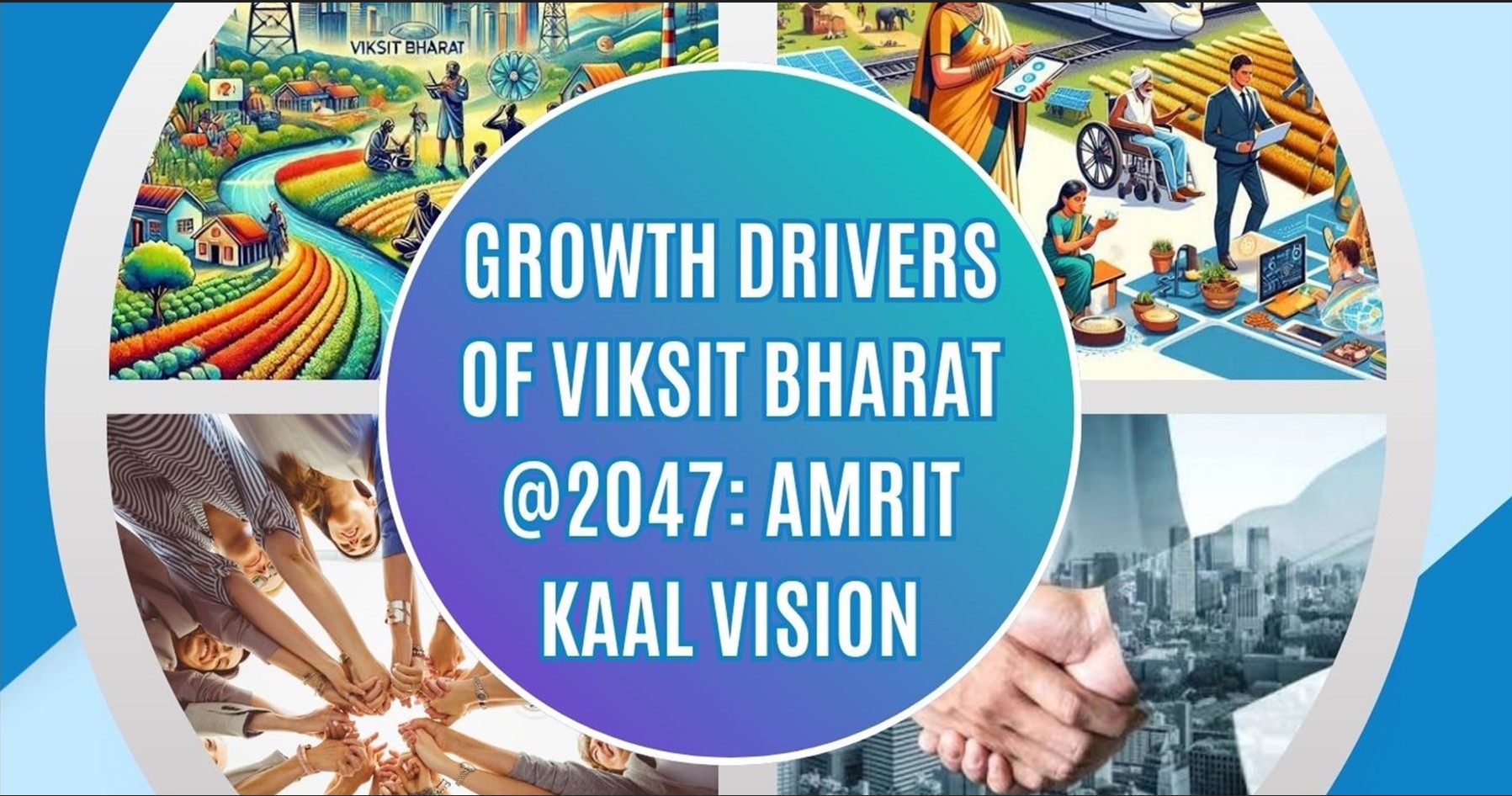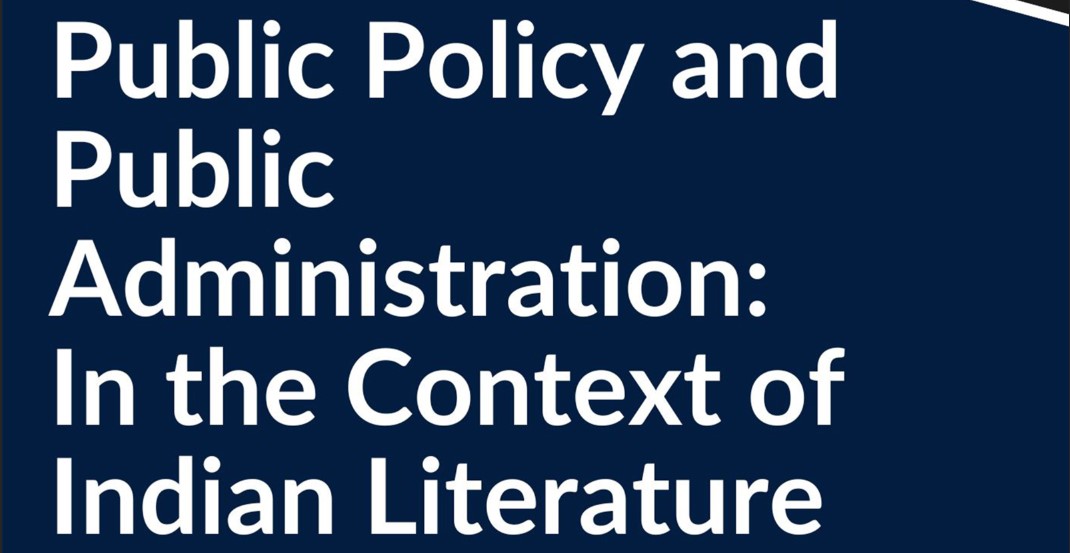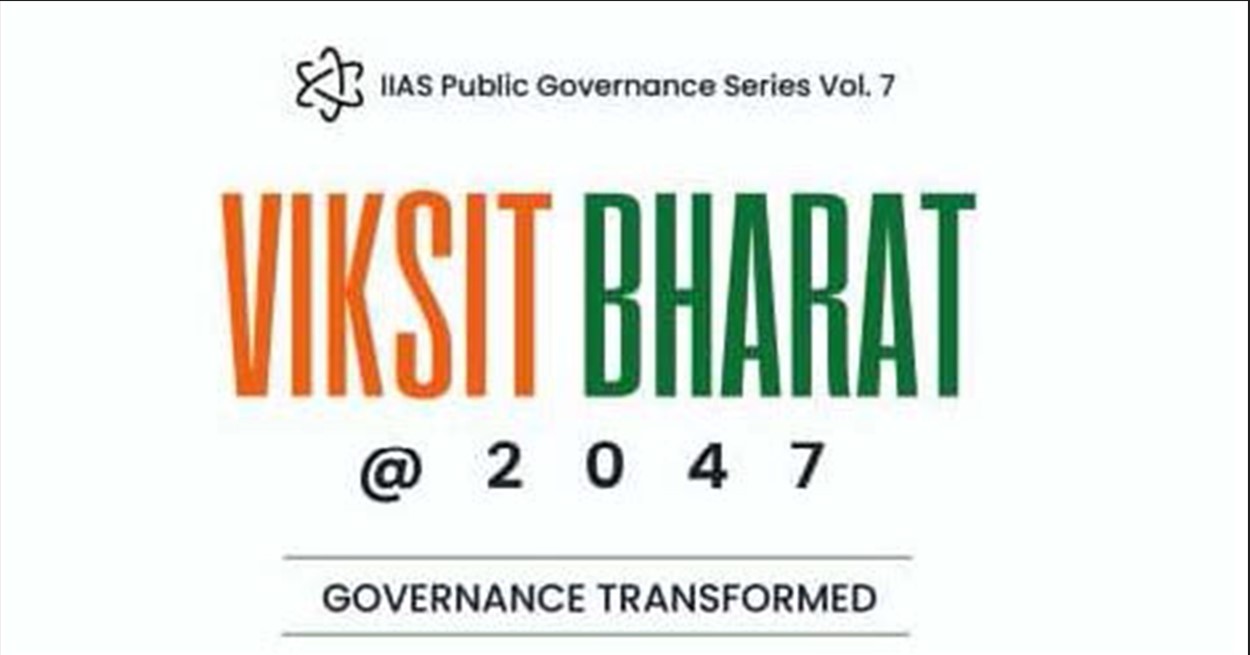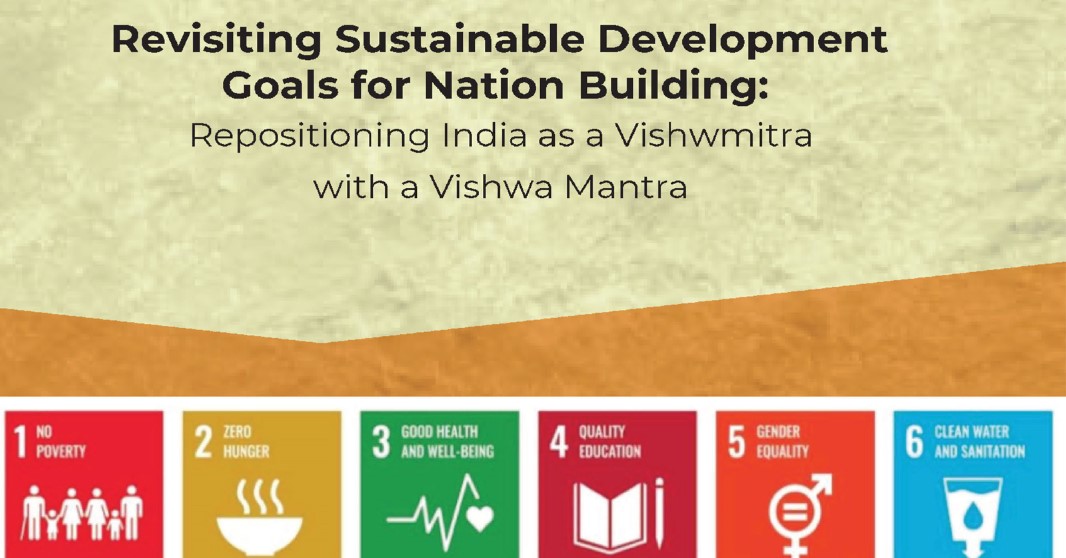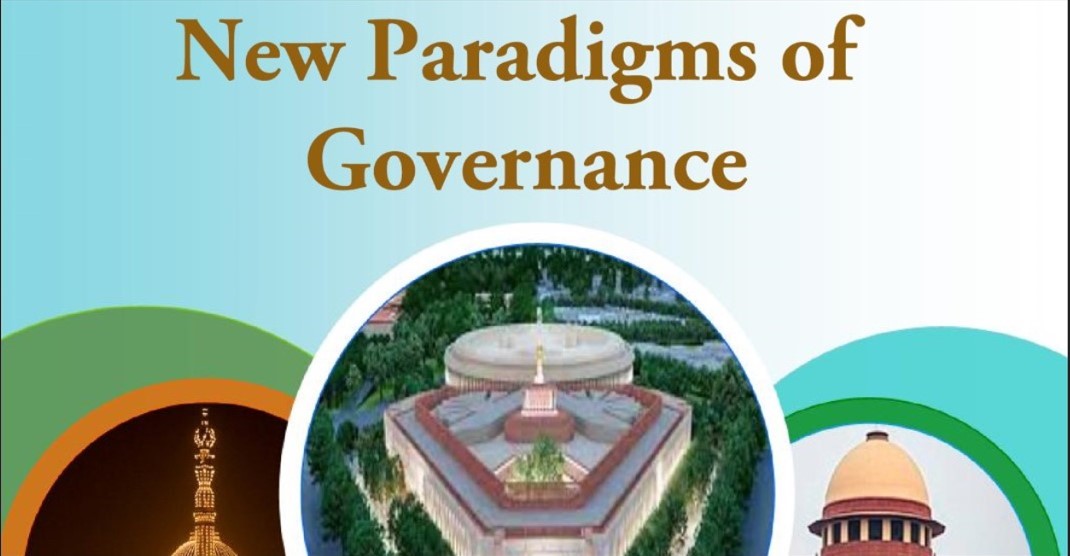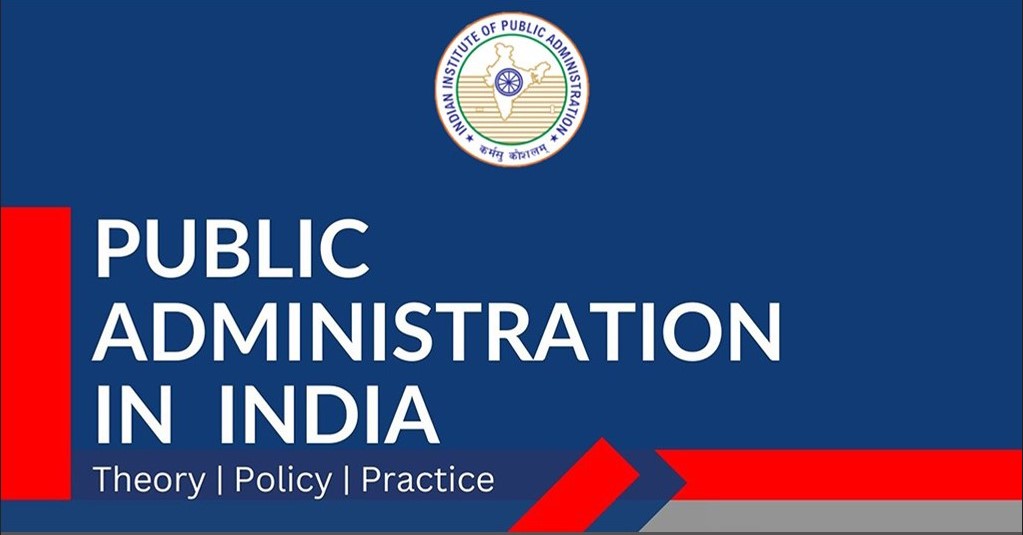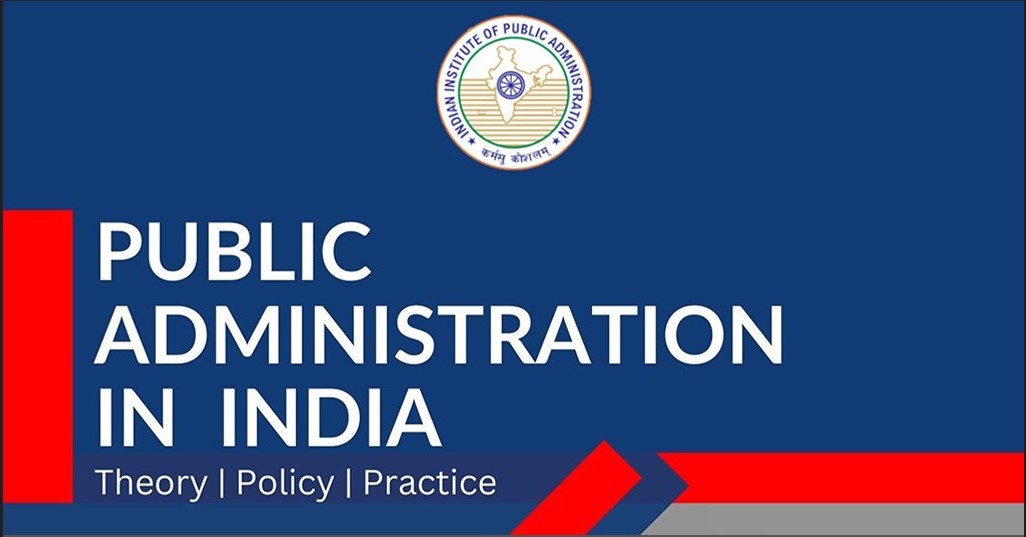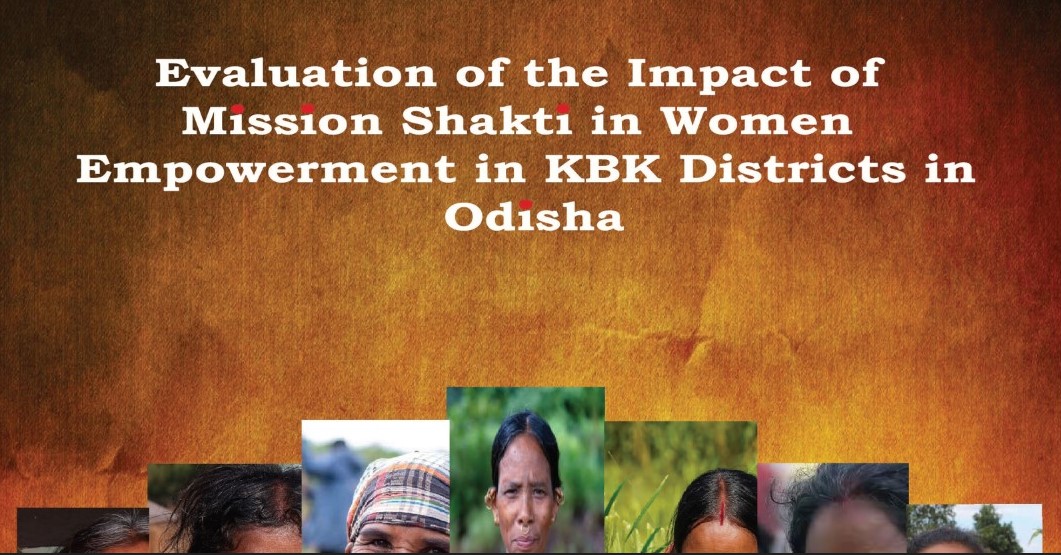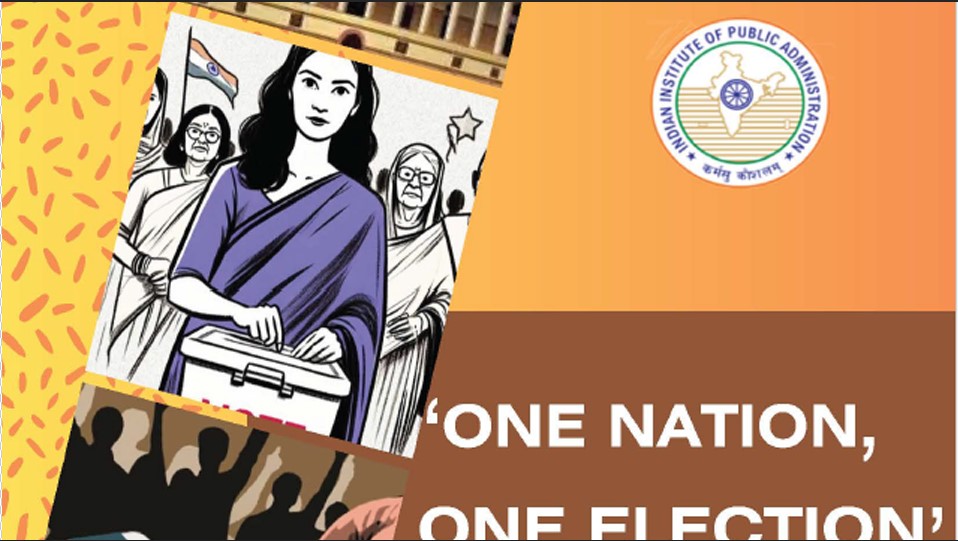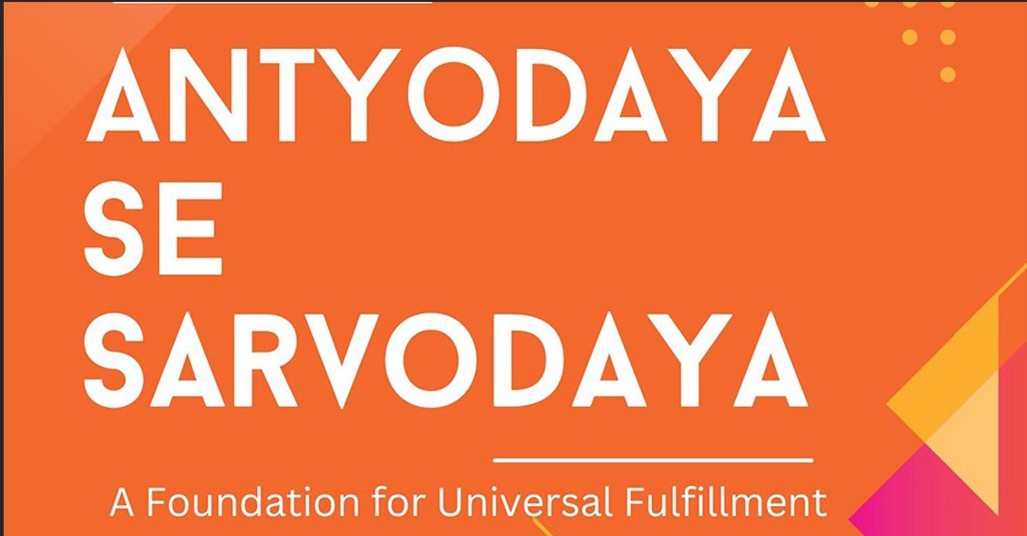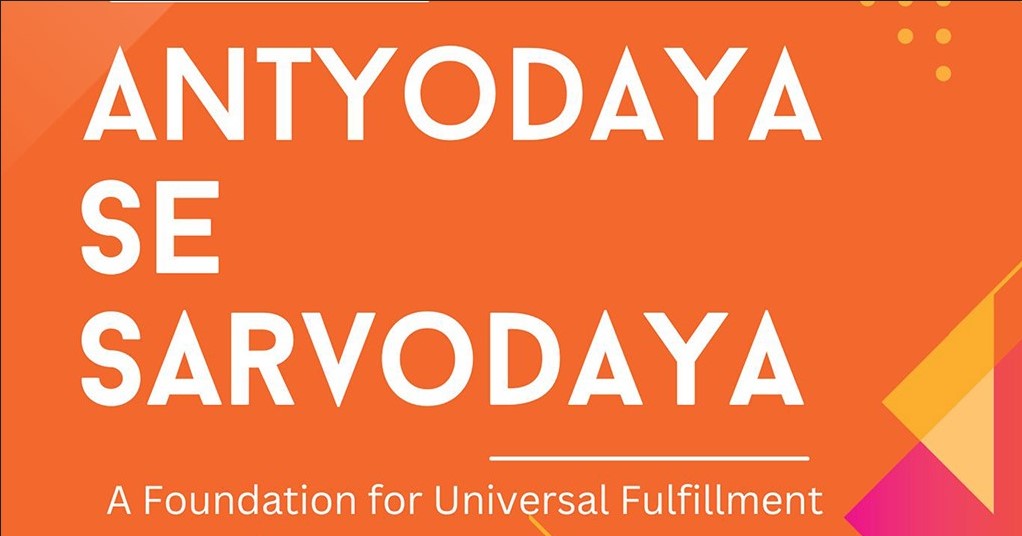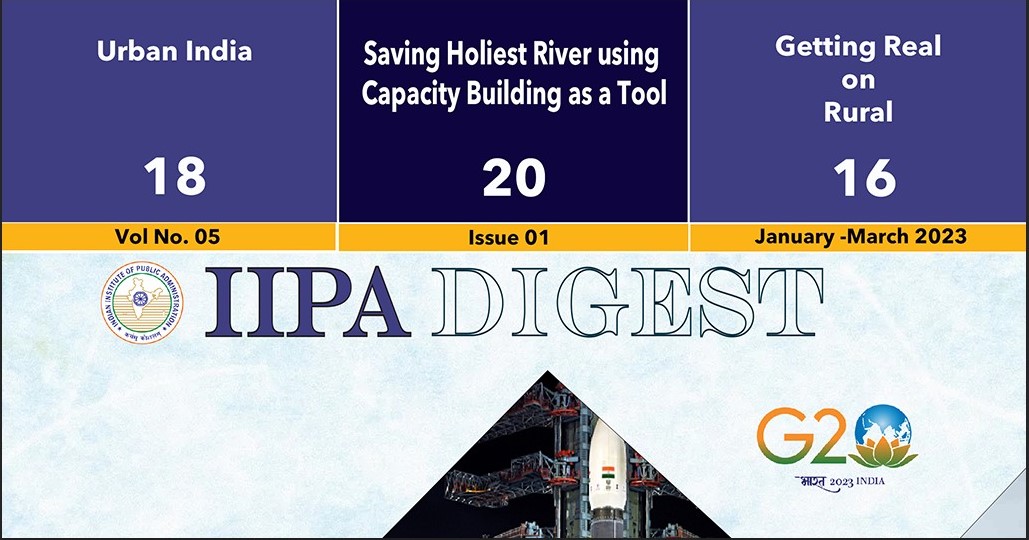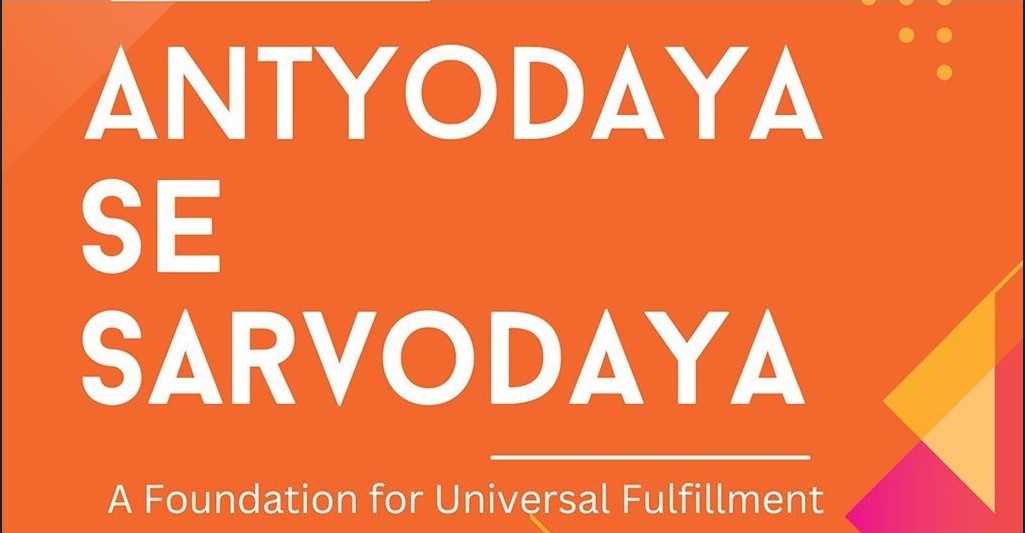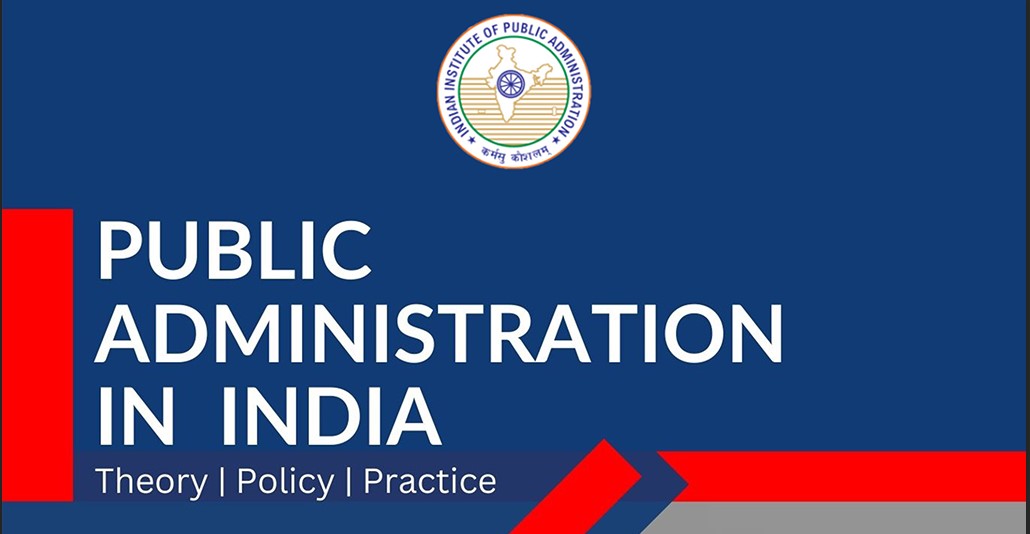Voices from the Streets: Framework Analysis of Street Vendors’ Perception Towards India’s PM SVA Nidhi Scheme and its Impact on Citizen Participation in Building Viksit Bharat @ 2047
Abstract
As India approaches its 2047 centennial of independence, the idea of "Viksit Bharat" (Developed India) is gaining prominence in national discussions. This research paper explores how street vendors perceive the PM SVA-Nidhi Scheme and its significance in reaching this objective. Street vending plays a crucial role in the economy of urban India, but it faces obstacles due to inadequate regulatory enforcement. The scheme was launched to support vendors by providing loans aimed at their overall growth and economic advancement. The study involved face-to-face interviews with 125 street vendors to explore their views on the scheme and the financial difficulties they encounter. The study's data analysis, findings, recommendations, and suggestions are valuable for policy-making and long-term decision-making by municipal corporations and the Central and State Governments. This recommends the framework approach for qualitative policy research, revealing that a more precise understanding of street vending requires integrating various explanations. The PM SVA Nidhi initiative faced bureaucratic inefficiencies, suggesting adequate management and collaboration with social partners may remedy the weaknesses of current legislation and guarantee street vendors their constitutional rights.
Keywords: PM-SVA Nidhi Scheme, Street Vendors, Viksit Bharat 2047, Citizen Participation, Financial Inclusion
1. Introduction
1.1 Transformative Aspirations: Navigating India's Path to Economic Prosperity in 2024
The year 2024 represents a significant turning point in India's political scene, capturing global interest as the nation gears up for a vital election. This election coincides with Prime Minister Narendra Modi's 'Amrit Kaal' initiative, which seeks to elevate India from a developing to a developed country, targeting the establishment of a $30-trillion economy. Modi's vision, termed "Viksit Bharat" or Developed India, serves as a comprehensive framework for advancing the nation's economic, social, and technological landscapes. Central to this vision is the aim of fostering an inclusive economy that allows all citizens to engage and reap the benefits. The government promotes a pro-business climate through initiatives like Make in India, Digital India, and Startup India, striving to alleviate poverty and maximize India's economic capabilities. Infrastructure is vital to this initiative, with significant investments in transportation, urban development, and digital infrastructure. Major initiatives like the Smart Cities Mission and Pradhan Mantri Awas Yojana demonstrate the government's commitment to sustainable development and better living conditions. Additionally, social welfare programs such as Ayushman Bharat and Beti Bachao Beti Padhao aim to empower marginalized communities and improve access to essential services. Environmental sustainability is also prioritized, with programs aimed at renewable energy and water conservation. Ultimately, Modi's vision integrates technology to enhance governance and service delivery, showcasing India's progress in various sectors and its potential for future growth on the global stage.
1.2 Highlighting the Vital Role of Street Vendors in Urban India
Street vending is acknowledged as an important and valued profession in urban settings, enabling individuals to sell commodities in public spaces. Vendors typically set up in high-traffic commercial areas, such as railway and bus stations. They are crucial to India's informal urban economy, providing affordable, quality products to consumers from diverse income groups, including the urban poor. Their offerings include clothing, leather goods, and household items, often sourced from small-scale or home-based industries that employ many workers. Nevertheless, street vendors in India face various challenges, such as financial difficulties, Lack of social safety measures, gender disparities, safety issues, and a range of regulatory and political hurdles that vary by city. Although the Street Vendors (Protection of Livelihood and Regulation of Street Vending) Act of 2014 aims to protect their rights, its implementation by local authorities has been inadequate, leading to governance challenges for both public agencies and vendors (India Code, 2014).
Despite these obstacles, street vendors continue to play a vital role in the Indian economy. They account for more than half of the nation's income, contributing 63% to the GDP and representing a population of ten million (MoHUA, 2014). In summary, street vendors are a crucial aspect of India's urban economy, and initiatives aimed at enhancing their livelihoods can benefit the country's economic growth and development. They are the ones with whom we interact and need them daily. While we happen to interact with them daily, we at times tend to overlook their sheer entrepreneurial skills and business acumen. It is intriguing to know that, without much formal education or being funded by angel investors, they run their businesses. The saying ‘necessity is the mother of invention’ feels apt in their case, since the necessity is to earn money and make a living that leads to novel ways of customer attraction and distinguishing themselves from the competitors. Enough said, the business model upon which the street vendors function, strategize, and execute their businesses produces the greatest learnings for the new and aspiring entrepreneurs.
1.3 Integrating Street Vendors into Viksit Bharat: Empowerment, Participation, and Policy Challenges
This section places street vendors within the context of the Viksit Bharat framework, highlighting their essential economic role in urban environments. Their inclusion in formal initiatives such as the PM SVA Nidhi scheme aligns with the objectives of Viksit Bharat, emphasizing the significance of citizen engagement in policy-making. The scheme supports street vendors by offering vital financial resources, facilitating their active participation in the economy, and embodying a grassroots approach to policymaking. Additionally, exploring citizen engagement entails assessing how street vendors view government programs like the PM SVA Nidhi scheme. Gaining insight into these perceptions provides important information about the effectiveness of these policies and their relevance to citizens' needs, highlighting the significance of participatory governance. Feedback from street vendors serves as a crucial mechanism for shaping future policy decisions, aligning with Viksit Bharat's vision of inclusive governance, where citizen voices are valued in policy formulation. Additionally, addressing obstacles and challenges is essential, particularly the bureaucratic inefficiencies that hinder vendors from benefiting from the scheme. By identifying these challenges, the research can propose actionable recommendations to enhance citizen participation in governance, such as streamlining application processes and improving communication between government agencies and street vendors. This research ultimately underscores the role of citizen engagement in governance through the experiences of street vendors with the PM SVA Nidhi scheme, reinforcing the idea that empowering marginalized groups is essential for realizing the vision of a developed India and achieving sustainable economic growth.
1.4 Empowering Urban Livelihoods: The Role of PM SVA Nidhi in Achieving Viksit Bharat 2047
The PM SVA Nidhi Scheme plays an essential role in the Viksit Bharat initiative, which seeks to position India as a developed nation by 2047. This program is dedicated to assisting street vendors by offering financial support to enhance their livelihoods and help them transition into the formal economy. The scheme's impact on this vision can be outlined as follows:
i. Financial Support: The Prime Minister Street Vendor's Atmanirbhar Nidhi Scheme offers collateral-free loans of up to ₹10,000; allowing vendors to either rejuvenate or expand their trade. Recent data indicates that more than 57 lakh beneficiaries have accessed loans through this initiative, highlighting its role in promoting economic independence.
ii. Income Enhancement: Participants in the PM SVA Nidhi scheme have reported significant increases in their annual earnings, with some vendors gaining an additional ₹23,000 per year. This financial boost is essential for many who previously struggled to secure formal credit.
1.5 Integration into Development Initiatives
i. Linkages with Other Programs: The PM SVA Nidhi scheme operates within a larger framework designed to ensure that welfare initiatives effectively reach grassroots communities. During the Viksit Bharat Sankalp Yatra, which engaged over 10 crores of participants, many vendors and marginalized groups were directly linked to various government services.
ii. Saturation Approach: The initiative employs a saturation strategy to guarantee that all eligible individuals benefit from developmental programs. This approach encompasses not only financial aid but also health services and access to other social welfare initiatives.
2. Review of Literature
Adapting and Thriving: Vendor Resilience Post-Pandemic
The global outbreak had a profound effect globally, especially on economies and people's livelihoods. After the "self-imposed lockdown" on March 22, 2020, the Indian administration enforced strict Curfew Restrictions that impacted all sectors of society. In spite of the pandemic, local governments relied on vendors to maintain a continuous stock of crucial commodities, like groceries, in urban areas and their outskirts (Maniktala and Jain, 2021). In June 2020, a second lockdown was imposed, and many street vendors were found to have contracted COVID-19. Asymptomatic vendors were considered to be super-spreaders, leading health experts and local authorities to prohibit them from vending to control the virus's transmission. The ban adversely affected the earnings and livelihoods of street vendors throughout India, as consumers became wary of buying from them due to worries about hygiene standards. Consequently, numerous street vendors had to close their businesses, resulting in stagnant incomes and increased reliance on community support, government assistance, and a few charitable organizations that provided them with necessities. The primary obstacle for street vendors was to resume their businesses since they had used up most of their savings and loans to survive during the pandemic. To resume their trade work, they needed WC, which included purchasing intermediate goods to start afresh in many cases.
2.1 Empowering Vendors: A Guide to the PM SVA Nidhi Scheme
In July 2020, the Indian government launched the scheme to provide Working Capital (WC) to street vendors. This unique micro-credit program was designed to assist street vendors by offering them a WC loan of Rs 10,000 @ 7% APR from various banks and non-banking FIs throughout the country. The PM SVA Nidhi scheme defines a vendor as any person who engages in the trade of commodities, edibles, and mundane stock or provides facilities to the community on a road, boardwalk, roadway, etc., from an impermanent composition or by migrating. The products and facilities provided by street vendors comprise groceries, perishables, fast food, beverages, bread, fabrics, handicrafts, stationery, pan shops, etc. The application process for the PM SVA Nidhi scheme is available both online through an online website and by furnishing a form at the nearest FIs and Banks. This scheme provides a chance for vendors to acquire working capital & restart businesses, which were severely impacted by the global outbreak and the subsequent nationwide curfews.
Table 1: Unveiling Key Aspects: Understanding the Scheme Essentials
Source: Authors’ Synthesis
2.2 Significance of Study
The insufficiency of legal protections & regulations for vendors has resulted in a deficit of targeted micro-credit programs aimed at enhancing their financial engagement. Although literature discusses various recommendations for uplifting street vendors, such as amending laws and providing lawful individuality, nothing definite has been done to acknowledge their financial shortcomings in the short term. In Delhi, there was no micro-loan initiative specifically for them. They are often itinerant to the town, and their papers are associated with their native state. Additionally, they may labor in other states in spite of having countrywide individuality papers, such as the Voter ID card, which serves as proof of identity but cannot be utilized for casting votes in a place other than where it is registered. This generates a state where they have to rely on alternative systems to prevailing formal clerical arrangements. They become member of the informal sector and are forced to commence their corresponding monetary structure that can help them in surviving and further expansion. To address this challenge, it is crucial to grasp the monetary needs of vendors and their perception about the primary government micro-credit initiative designed for them, the PM SVA NIDHI. Filling this gap can contribute to more effective financial inclusion strategies for street vendors, enabling them to obtain the capital necessary for business growth.
2.3 Research Goals: A Focus on Objectives
The main objectives of the research are outlined as follows:
i. Understanding the Perception and Experiences of Street Vendors in Delhi Regarding Prime Minister Street Vendor's Atmanirbhar Nidhi Scheme as Catalyst for Citizen Participation in Building Viksit Bharat 2047.
ii. Recognizing the financial difficulties encountered by street vendors.
The global outbreak led to significant income loss for the vendors, severely influencing their capacity to sustain themselves. In response, the PM SVA Nidhi Yojana was introduced as a dedicated micro-credit program, providing individual loans of Rs 10,000 as working capital to help them restart their vending operations and protect their livelihoods. This report seeks to examine the results of the scheme’s implementation on the lives of vendors and to explore how different agencies have complicated the process for the stakeholders instead of facilitating access.
The study surveyed 125 vendors from the North West zone of Delhi, which revealed that many vendors preferred to borrow money from friends and relatives rather than apply for the PM SVA Nidhi Yojana due to the lengthy loan sanction process and the complex documentation and procedures involved.
3. Research Methodology
• Participants: 125 Street vendors from North West Delhi were contacted as participants for the study. The participants belonged to the age group of 24-60 and above.
• Data Collection: This study gathered information through in-person interviews conducted over two months in June and July 2022, employing the Responsive Interviewing Technique. The survey included 125 street vendors engaged in four different occupations in the unorganized sector in India, namely street trade and informal waged work as house help, office help, or shop assistant. The study population consisted of individuals who were not well-educated and had limited familiarity with financial and policy-related subjects.
• Sampling Method: The participants were selected using a Maximum Variation Sampling method.
• Data Analysis: The research employs a qualitative approach using a combination of interviews and document analysis (Academic Articles, Government Reports, Policy Documents, and Indices) to obtain a comprehensive understanding of the scheme and its role in achieving the vision of ”Viksit Bharat 2047”. The responsive interviewing technique was employed during the interviews with street vendors to gain a nuanced and detailed view of their experiences. The research developed a case-centric thematic method for organizing and analysing qualitative data. The method involves generating codes and classifications based on transcripts of interviews with street vendors. The initial codes are grouped into broad categories, which then lead to the formation of initial themes. The coding matrix is validated by experienced researchers and revised as new insights emerge. The NVivo software is used for data management and analysis. The method helps to create descriptive and explanatory accounts of the data while staying true to the participants' descriptions. The framework approach is utilized to devise fundamental ideas, which are analysed about pre-existing literature and theoretical viewpoints.
Table 2: Variation Sampling for Selecting Street Vendors for Interviews
Source: Authors’ Synthesis
To finalize street vendors for the interview, the researchers used a maximum variation sampling technique, which involved selecting three different types of neighbourhoods commercial, housing, and industrial districts. From each type, one comparatively comfortable and one moderately underprivileged neighbourhood was chosen. To contrast commercial areas, Mangol Pur Khurd and Commercial Street were selected. In contrast, Karala and Ladpur were chosen as complementary housing areas where primarily females operated with hand carts, and vending was popular during daylight or night wanders of the residents. Finally, Wazirpur Industrial Area was selected as the contrasting industrial district for street vendors who primarily operated from movable hand carts.
4. Construction of the survey
During the interview process, the researchers asked questions to explore the street vendors' workplace structures, economic status, operational characteristics, socio-business environment, motivations, fears, and concerns. The survey questionnaire investigated whether the vendors were mobile or stationary, their work histories, socio-demographic characteristics such as their age, how long they had been vending, the type of goods and services they sold, their earnings and working hours, reasons for engaging in vending, and any concerns they had, such as having to pay bribes to operate. A field survey was conducted within the North West Zone of the Delhi Municipal Corporation, with a sample of 125 street vendors from different neighbourhood categories as mentioned in Table 2. The street vendors were interviewed to comprehend their perceptions and challenges pertaining to the PM SVA NIDHI scheme. Additionally, the researchers reviewed secondary sources such as news articles, YouTube videos, and research papers.
• Grouping Variables: The participants were separated into two groups according to their neighborhood types, which included commercial, residential, and industrial districts.
• Ethical Consideration: The participants were briefed about the study's objective and their rights as participants, and they gave their informed consent. To safeguard the participants' privacy, all data was kept confidential and anonymous.
5. Legal Aspect
Table 3: Government Policies related to Street Vendors
Source: Authors’ Synthesis
6. Empirical Evidences
The researcher is confident that the data analysis, facts, findings, recommendations, and suggestions from this project will be beneficial for policy-making and long-term decision-making in the following areas:
i. Municipal Corporations for creating a planned and secure urban environment.
ii. Indian manufacturers for ensuring a stable business landscape.
iii. The Central Government for fostering a robust economy.
iv. State Governments for promoting financial growth.
v. The Revenue Department for enhancing revenue generation.
7. Presentation and Evaluation of Gathered Information
7.1 Use of Interviews and Document Analysis
In policy research, information sources can be bifurcated into documents and people. For our research on street vendors, we used document analysis to design interviews and observational studies. Before conducting interviews, we referred to documents such as the reports on street vending acts and Town Vending Committee (TVCs) reports, which provided valuable background information. Both documents and observational data fulfill a crucial function in our research process, as they can either support or contradict each other. As a result, we chose to use a blended methodology that combined interviews and document analysis. In order to acquire a more thorough comprehension of a policy, we used a technique called "responsive interviewing" in combination with document analysis. This approach enables us to gain a comprehensive and in-depth understanding of the subject matter, which would not have been possible through interviews or document analysis alone.
7.2 Responsive Interviewing
In our interviews with street vendors to gain an understanding of their perceptions of policy, we utilized a technique called "responsive interviewing," as proposed by Herbert and Irene Rubin (2005). This approach is based on the interpretive constructionist philosophy and incorporates some elements of critical theory, while also taking practical considerations into account. Unlike a strictly positivistic approach, the responsive interviewing model is adaptable throughout the project, and the aim is not to arrive at definitive answers or truths, but rather to comprehend how the interviewee perceives and interprets their experiences.
7.3 Employing a case-centric thematic method for a streamlined data repository
Codes and classification were generated by evaluating every sentence, expression, or passage of the record as an approach to outline the perception and understanding of the street vendors. To begin, unpublished copies of the transcripts with significant expressions marked and appropriate comments as footnotes were utilized to incorporate inchoate thoughts. Keywords were encapsulated using street vendors' words in the Interview taken (in-vivo coding). The framework method suggested utilizing these codes derived from the data to maintain their authenticity, and classifications were created based on these codes. The process of generating a coding matrix began with the formation of initial ideas.
7.4 Developing and Validating a Thematic Framework for Data Analysis
To analyse the various experiences of vendors about the difficulties they faced while applying for the scheme and receiving the Letter of Recommendation (LOR), a coding matrix was created using fifteen interview transcripts. The coding matrix and its source transcripts underwent a review process by two experienced researchers to ensure the study's accuracy and reliability. Any changes made during the review process were recorded in a scholarly paper, and footnotes were added to the periphery of the coding matrix to provide additional context. The initial in vivo codes were grouped into broad categories, which then led to the formation of initial themes. These themes comprised the coding directory, which was used to organize the complete data. The coding index was revised as new insights emerged during the data analysis process.This analysis utilized NVivo, a qualitative data analysis software, to identify patterns in data. Initially, data was managed using hard-copy logs, which were later transmitted to NVivo. As data administration was processed, NVivo was utilized instinctively, with data being directly coded into the software. This allowed for the emergence of preliminary thoughts and associations between classifications and early compositions while maintaining relations to the initial data. While coding matrices can be developed employing Microsoft Word, it can be difficult and unwieldy when dealing with large volumes of data. Therefore, using the coding recovery and examination structures in NVivo was the foremost phase of a comprehensive investigation.
Table 4: Coding Index for Interview Analysis
7.5 Creating Descriptive and Explanatory Accounts for Qualitative Data Analysis
Qualitative analysis involves creating descriptive accounts by revising preliminary themes and classifications while staying true to the participants' descriptions. This is done by continuously referring back to the Initial transcripts and using NVivo exploration functions to identify significance conveyed through various Interviews. To develop abstract concepts, one must identify crucial aspects of the data and establish connections between various themes and concepts. Explanatory accounts, conversely, it is necessary to reflect upon the initial data and analytical processes to guarantee a precise portrayal of the experiences and beliefs of street vendors. This is important to reduce the risk of misinterpretation. To grasp the viewpoint and comprehension of a scheme among street vendors, the framework approach was utilized to devise three fundamental ideas: uncertainty, expertise acquisition, and leading a regular life. The application of this approach was specifically focused on the concept of uncertainty. The ultimate stages of this approach included analysing the ideas and themes by scrutinizing their association with the pre-existing literature and theoretical viewpoints to comprehend street vendors' experiences. In order to conduct a more insightful analysis of the data, a break was taken to review all transcripts in their entirety. The analysis process consisted of examining the data as a whole, individual participant accounts, and initial categories, in order to establish final categories and a conceptual framework that accurately portrays the experiences of the street vendors.
Table 5: Exploring Uncertainty: Developing Core Concepts and Final Themes in
7.6 Concluding Remarks on the Use of a Case-Centric Thematic Method and Framework Approach
According to experts, the framework approach can be highly beneficial for analysing data in qualitative policy research. For those who are new to qualitative research, it can provide a structured and straightforward path, as well as a case-centric thematic methodology of data analysis. This methodology can help researchers keep track of their decisions and ensure transparency and coherence amid the Initial themes and the resulting conclusions. By utilizing this approach, researchers can add rigor to the research process and enhance the validity of their results.
Figure1: Theme-Based Framework for Qualitative Scheme Analysis
Source: Authors’ Synthesis
8. Analysis (Dialogue)
Street vendors, who are taken into account as the most vulnerable section of the urban population, have been facing numerous challenges for a long time. They feel marginalized and excluded from society, with a negative observation of local urban org and state government. Due to the absence of any assistance from them. However, their perception of the PM scheme was positive, as it aimed to provide them with working capital and financial inclusion, which could help them reboot their livelihoods. The pandemic and the subsequent quarantine have severely affected all classes of the urban population, but street vendors have been hit the hardest, both financially and socially. The scheme aimed to pinpoint vendors, understand their socio-demographic profiles, and provide them with a pathway to a respectable livelihood. However, street vendors felt that complex & time-consuming processes and bureaucratic inefficiencies prevented them from benefiting from the scheme, despite its positive intentions. It's important to examine and understand the reasons the scheme failed to adequately reach and assist its target beneficiaries. We should explore methods to streamline the execution of special initiatives for vendors. So they feel included and secure, and their perception of the administration changes. This will help them move away from street vending and towards the organized sector, where they can expand, rather than simply survive.
9. Conclusion
Street vending is a significant and ancient arrangement of work found in nearly every major town and nation worldwide. The scheme aims to recognize street vendors, assess their social and economic circumstances, and provide them with a pathway to dignified livelihoods. However, bureaucratic inefficiencies and government barriers have hindered the program's effectiveness in benefiting its intended recipients. Experts suggest that employing a framework approach can enhance the validity of research results by offering a structured method for analyzing qualitative data in policy research. This study reveals that no single theory can uniformly apply to all street vendors; instead, a more nuanced understanding of this entrepreneurial activity requires integrating various perspectives. The legal landscape for street vendors in India is complex, involving interactions between vendors and the urban middle class. Enhancing the management of street vending and working together with key social partners can effectively tackle the limitations of current legislation, ensuring that vendors have their constitutional rights, protection, and the freedom to operate their businesses. The scheme plays a crucial role in vision for Viksit Bharat, as it not only promotes economic advancement for street vendors but also supports broader goals of inclusive development and social equity. By empowering grassroots individuals, this initiative makes a significant contribution to India's aspiration to become a developed nation by 2047. Additionally, exploring street vendors' perceptions on the scheme in the context of citizen engagement reveals important insights into how empowering marginalized communities can drive the objectives of Viksit Bharat and encourage more inclusive policymaking that prioritizes the voices of citizens.
9.1 Extended Research
Our study has facilitated significant discernment into the perceptions of street vendors towards the PM SVA Nidhi Scheme. However, we acknowledge that due to our limitations, there are several aspects that we wish could have been analyzed more comprehensively. Therefore, we suggest further research in this field to address these limitations.
Table 6: Future Directions
Source: Authors’ Synthesis
References
1. Adduci, M. Lo Street Vendors (Protection of Livelihood and Regulation of Street Vending) Act, 2014 come soluzione alla questione dello street vending.
2. Alekhina, V., & Ganelli, G. (2023). Determinants of inclusive growth in ASEAN. Journal of the Asia Pacific Economy, 28(3), 1196-1228.
3. Alva, R. J. (2014). The Street Vendors (Protection of Livelihood and Regulation of Street Vending) Bill, 2013: Is the cure worse than the disease?. Statute Law Review, 35(2), 181-202.
4. Bandyopadhyay, R. (2012). A Critique of the National Policy on Urban Street Vendors in India, 2009.
5. Bhowmik, S. K. (2005). Street vendors in Asia: A review. Economic and political weekly, 2256-2264.
6. Bhowmik, S.K., & Saha, D. (2011). Financial accessibility of the street vendors in India: Cases of inclusion and exclusion. Tata Institute of Social Science, Mumbai-India.
7. Bhowmik, S.K., & Saha, D. (2012). Street vending in ten cities in India. Delhi National Association of Street Vendors of India.
8. Bromley, R. (2000). Street vending and public policy: A global review. International Journal of Sociology and Social Policy.
9. Chakraborty, P., & Koley, S. (2018). Socio-Economic View on Street Vendors: A Study of a Daily Market at Jamshedpur. Journal of Advanced Research in Humanities and Social Science, 5(1), 14-20.
10. Devi, A. (2019). A Study on the Awareness of BPMP Street Vendors Towards Government Schemes in Bengaluru. International Journal of Research in Engineering Science and Management.
11. Dhamodharan, K. PROBLEMS OF STREET VENDORS IN PONDICHERRY.
12. Doibale, M. K., Mohite, S. D., Sawase, G. B., & Pagadal, P. H. (2019). Study of sociodemographic profile and causes of street vending in urban area, Aurangabad, Maharashtra. International Journal Of Community Medicine And Public Health, 6(9), 4005.
13. Government of India, Department of Urban Employment and Poverty Alleviation, Ministry of Urban Development and Poverty Alleviation, National Policy on Urban Street Vendors, 2004.
14. Government of India, Ministry of Housing and Urban Poverty Alleviation, Nirman Bhavan, National Policy on Urban Street Vendors, 2009.
15. Hasan, M., & Alam, J. (2015). Street garment vendors’ contribution to the economy and local community: an empirical study of the street garment vendors in Dhaka City, Bangladesh. International Journal of Management and Business Research, 5(2), 129-139.
16. Huichun Huang, Junli Yuan, Guanghua Lin & Jing Chi (2023) Underestimation of financial literacy and financial market participation, Journal of the Asia Pacific Economy, 28:1, 75-100, DOI: 10.1080/13547860.2020.1865249
17. Isaac, I., & Sanusi, Y. A. (2020). Impacts of physical planning regulations on street trading livelihood: Street traders’ right to the city perspective. In the International virtual conference on: Critical issues and challenges to sustainable development in Africa. Held at the faculty of social sciences, University of Nigeria, Nsukka on 27th and 28th October.
18. Joshi, A., & Reddy, V. (2022). Study of perceptions among street vendors of Ahmedabad on “Pradhan Mantri Street Vendor’s Atmanirbhar Nidhi Scheme 2020 (PM-SVA Nidhi Yojana)”-Special micro-credit program for street vendors. Journal of Positive School Psychology, 374-380.
19. Kiran, P. N., & Babu, G. N. P. V. (2019). Problems and prospects of street vendors: a study with reference to Visakhapatnam city. International Journal of Management, Technology and Engineering, 9(6), 2249-7455.
20. Lok Sabha Secretariat (LARRDIS) New Delhi BACKGROUND NOTE on “Implementation of Street Vendors (Protection of Livelihood and Regulation of Street Vending) Act, 2014”, 2020
21. Mahadevia, D., Vyas, S., & Mishra, A. (2014). Informal economy monitoring study: Street vendors in Ahmedabad, India. Manchester, United Kingdom: Women in Informal Employment: Globalizing and Organizing.
22. Mander, H. (2012). Reclaiming the city for street vendors. The Hindu.
23. Maniktala, N., & Jain, T. (2021). State of street vendors in India: pre- and post-COVID-19 analysis. Int J Policy Sci Law, 1(2).
24. Masagus M. Ridhwan, Asep Suryahadi, Jahen F. Rezki & Dinda Thalia Andariesta (2023) The impact of COVID-19 on the labour market and the role of E-commerce development in developing countries: Evidence from Indonesia, Journal of the Asia Pacific Economy, DOI: 10.1080/13547860.2023.2195710
25. Meher, S., Ranjan, A., Tamgire, L., & Shukla, P. (2020). ‘It is lockdown, but homes are not closed. Income has been shut down, but expenses continue: Impact of lockdown due to COVID-19 on the livelihood of Street Vendors in Maharashtra.
26. Ministry of Law and Justice (Legislative Department), The Street Vendors (Protection of Livelihood and Regulation of Street Vending) Act, 2014. Publication in The Gazette of India, 5 marzo 2014, parte II, sezione I, New Delhi. Naik Abhayraj, 2014. "Contextualising Urban Livelihoods: Street Vending in India", NASVI
27. Ray, C. N. (2017). Urban informal sector, urbanisation and street vendors in Gujarat. Lulu.com.
28. Rizwana, M., Singh, P., & Raveendra, P. V. (2021). Promoting Financial Inclusion through Digital Wallets: An Empirical Study with Street Vendors. In Financial Inclusion in Emerging Markets (pp. 281-293). Palgrave Macmillan, Singapore.
Leave a comment
More articles from Governance & Polity




